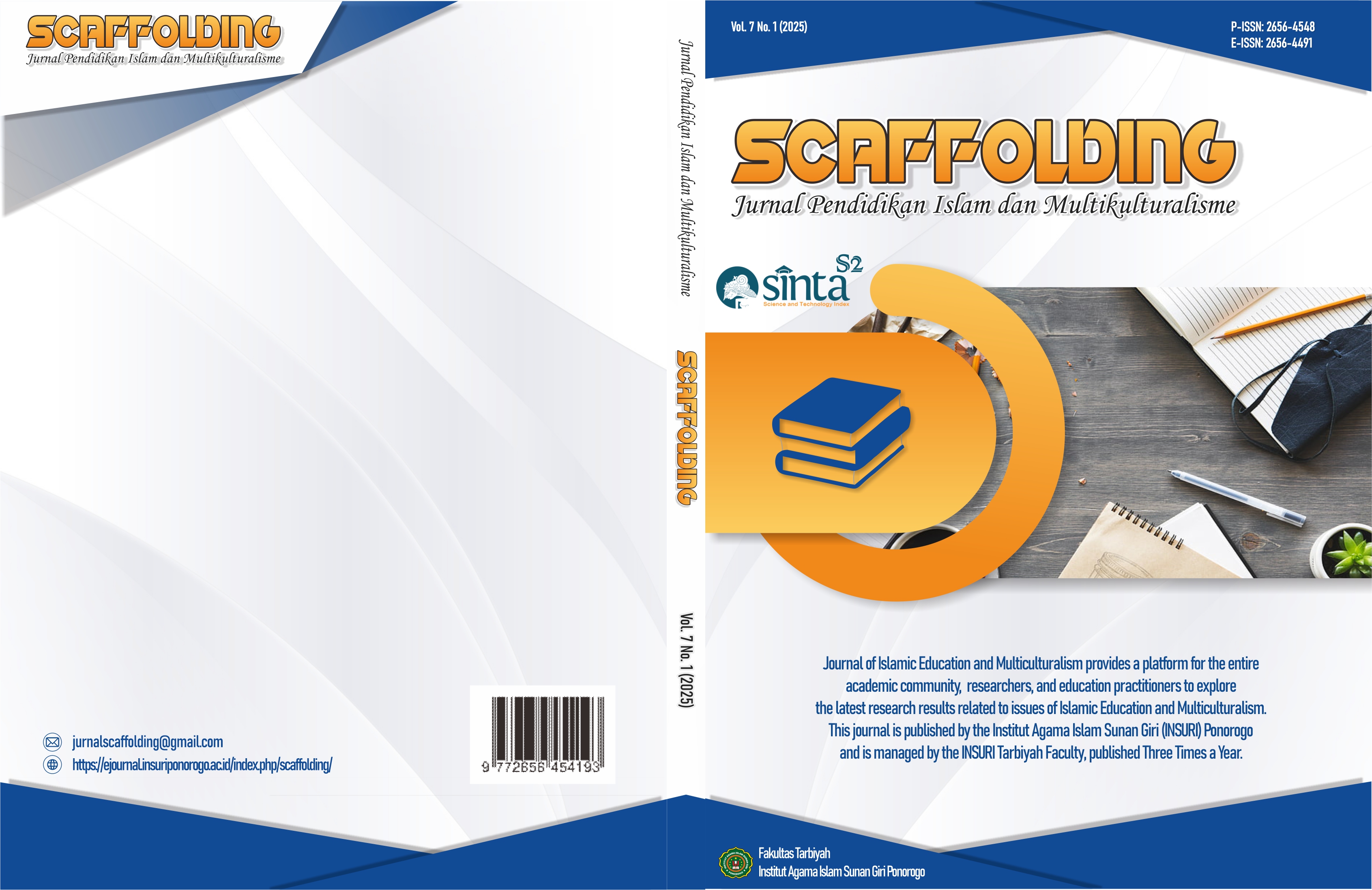Implementation of the Islamic Religious Education Curriculum in Shaping Multicultural Social Cohesion Among Students
DOI:
https://doi.org/10.37680/scaffolding.v7i1.7303Keywords:
Curriculum Implementation, Islamic Religious Education, Social Cohesion, Student MulticulturalismAbstract
This study aims to examine the implementation of the Islamic Religious Education (PAI) curriculum in shaping students' social cohesion at SMA Negeri 1 Takengon, Central Aceh Regency. It employs a qualitative approach through field study methods. Qualitative data—namely the activities related to PAI curriculum implementation at SMA Negeri 1 Takengon—were obtained via in-depth interviews with the school principal, PAI teachers, and students, as well as through observation and documentation. Data were analyzed inductively through reduction, data display, and drawing conclusions. The results reveal that the implementation of the PAI curriculum at SMA Negeri 1 Takengon has been effective in fostering students’ social awareness. PAI teachers play an active role not only in delivering instructional content but also in exemplifying and guiding students to live harmoniously amidst diversity. The internalization of social cohesion values is carried out through discussion methods, case studies, and experiential learning. The study concludes that the PAI curriculum contributes significantly to forming students' social cohesion when supported by appropriate teaching strategies and a conducive school environment. Strengthening teacher capacities and integrating multicultural values into the curriculum are necessary to make religious education a primary pillar in maintaining national social integrity.
Downloads
Published
Issue
Section
License
Copyright (c) 2025 Al Musanna Al Musanna, Abdussyukur Abdussyukur, Syamsul Bahri

This work is licensed under a Creative Commons Attribution-NonCommercial 4.0 International License.
Authors who publish with this journal agree to the following terms:
Authors retain copyright and grant the journal right of first publication with the work simultaneously licensed under a Creative Commons Attribution-NonCommercial 4.0 International License that allows others to share the work with an acknowledgement of the work's authorship and initial publication in this journal.
Authors are able to enter into separate, additional contractual arrangements for the non-exclusive distribution of the journal's published version of the work (e.g., post it to an institutional repository or publish it in a book), with an acknowledgement of its initial publication in this journal.
Authors are permitted and encouraged to post their work online (e.g., in institutional repositories or on their website) prior to and during the submission process, as it can lead to productive exchanges, as well as earlier and greater citation of published work.



